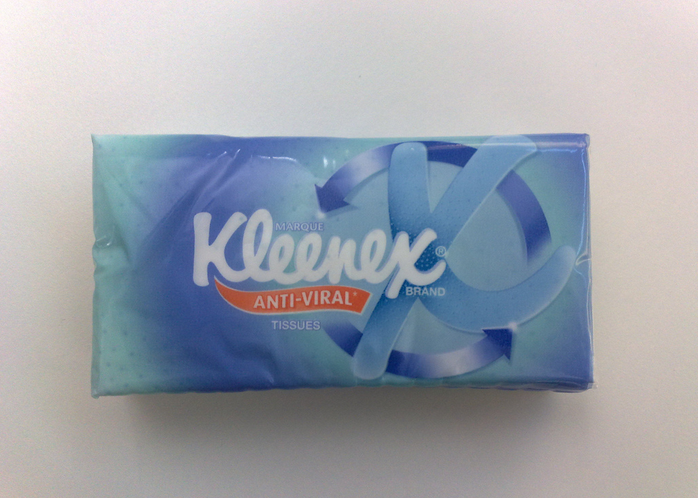
Kimberly-Clark Corporation is a Fortune 500 company that doesn’t do advertising or digital marketing. The very words, according to CMO Clive Sirkin, are irrelevant. For Kimberly-Clark, the personal care corporation behind paper-based consumer products like Kotex and Kleenex, it all comes down to brand building.
Sirkin, a former agency exec at Leo Burnett, recently outlined to Digiday the challenges of whipping its more than 50,000 employees into a digitally agile machine, why data drives him nuts, and what big brands can learn from the Israeli army.
As Sirkin admitted, he thinks Kimberly-Clark is a “long way away” from figuring everything out, but he embraces being in “perpetual beta” — and encourages his marketers to be just as open to taking risks. Excerpts:
A lot of brands talk about having digital innovation coded into their DNA. How is Kimberly-Clark reverse engineering that?
Every marketer should be a digital expert. I don’t know how long that will take us. We have made a massive commitment to a program we call “Digital IQ,” which is part of our “Global Marketing University” program. The idea is to build the competency of our brand builders and elevate the digital IQ and acumen of the entire organization — principally the marketing organization. We do everything from walking people through setting up LinkedIn and Twitter accounts and how to shop online — and then drive to more sophisticated stuff. It’s not a lot of classroom stuff; it’s more facing problems and walking through them. We leverage our agency partners too. It’s not just talk — we put in a lot of money to this.
You have all these marketers, and yet you’ve said you don’t do advertising.
We don’t do advertising. We talk about building brands in a digital world, but I’ve banned the word “digital marketing” too. We write briefs around business problems, and we ask agencies to come to us with business ideas. We don’t look at a script for an ad or a billboard. We want to figure out what is preventing consumers from buying more or doing more. That changes fundamentally how you get your marketers and agencies to think about ideas, because generally they are trained to think in terms of executions, in terms of a TV ad. The worst term ever created is 360 marketing.
Why’s that?
Why do you want to be everywhere? You just want to shout about it because you can? Working or non-working dollars, or media neutrality, although people don’t use that anymore — I’m dating myself. But all these terms get abused.
What else gets abused?
Budgets. If you go into it saying, “I’m going to allocate budgets by media vehicles,” then why are you wasting your time? You’ve already decided. We budget at the idea level. We don’t have campaigns. If you have two programs and your budget is $20 million, then you will have $10 million for each. Then you design the programs, and then add money to the media. Yeah, we will be in the upfronts, but we will manage our exposure there.
How so?
Let’s say we spend $100 million on TV, then we will go in $60 million in the upfronts, as opposed to going in at $240 [million] — we aren’t going to get caught in it. The tradeoff of CPMs and efficiencies in the upfronts versus impact in your program, I’m willing to take that risk. I’m not looking to be a low-cost provider of things I don’t need. I want to be a good buyer of things I do need.
What are the biggest challenges facing brands right now?
How do you change the decision-making cycle? Everyone talks about the Oreo moment, that planned spontaneity. But they only did it once. So how do you make it systemic as opposed to waiting for that perfect storm? It’s hard but completely doable. We are doing stuff, but it’s not scalable yet.
So how do you make a large organization like Kimberly-Clark more agile and willing to take risks?
Giving people the feeling they are bullet proof if they fail. You have to let them know they can go ahead; don’t be stupid, but if you do something intelligent and risky, it’s OK. No one is going to get killed if you screw something up. I’m reading “Start-Up Nation” right now, and it talks about why Israel is such a massive innovator in tech. The most interesting part is how the army is run. How they push down decision-making and empower very young junior officers to make decisions. They create a culture where junior people are expected to question authority. I always tell people my three most exciting words in brand building are “why?” and “who said?” Brand building isn’t paint-by-number.
Image via Flickr
More in Marketing

What does the Omnicom-IPG deal mean for marketing pitches and reviews?
Pitch consultants predict how the potential holdco acquisition could impact media and creative reviews heading into the new year.

AdTechChat organizers manage grievances amid fallout of controversial Xmas party
Community organizers voice regret over divisive entertainment act at London-hosted industry party, which tops a list of grievances.

X tries to win back advertisers with self-reported video stats
Is X’s big bet on video real growth or just a number’s game?





